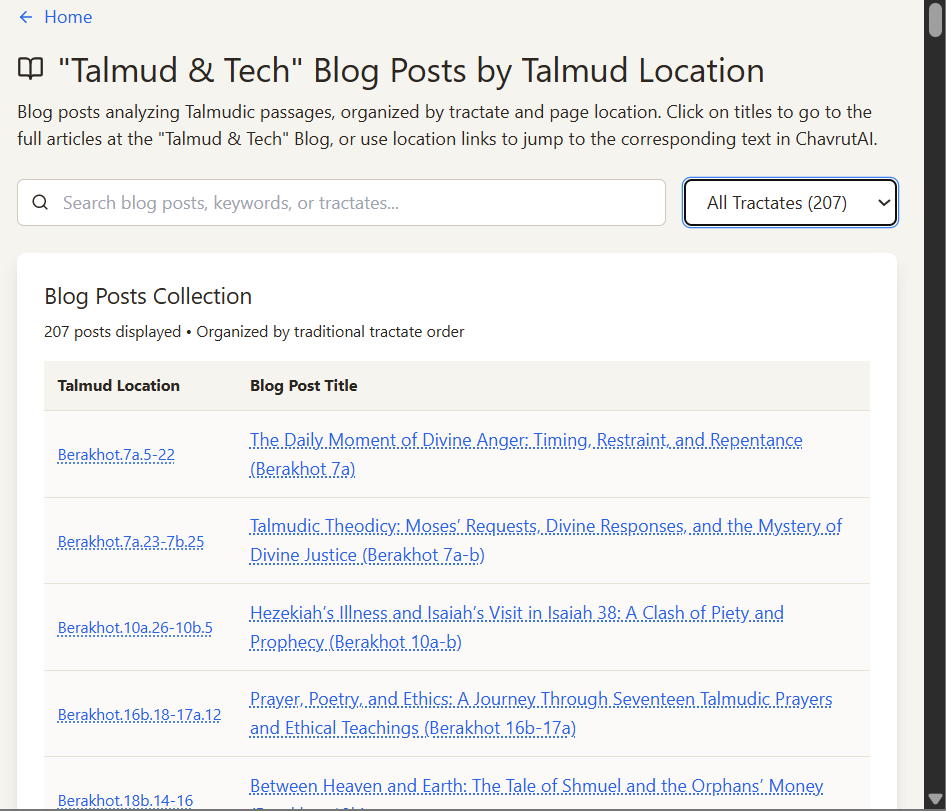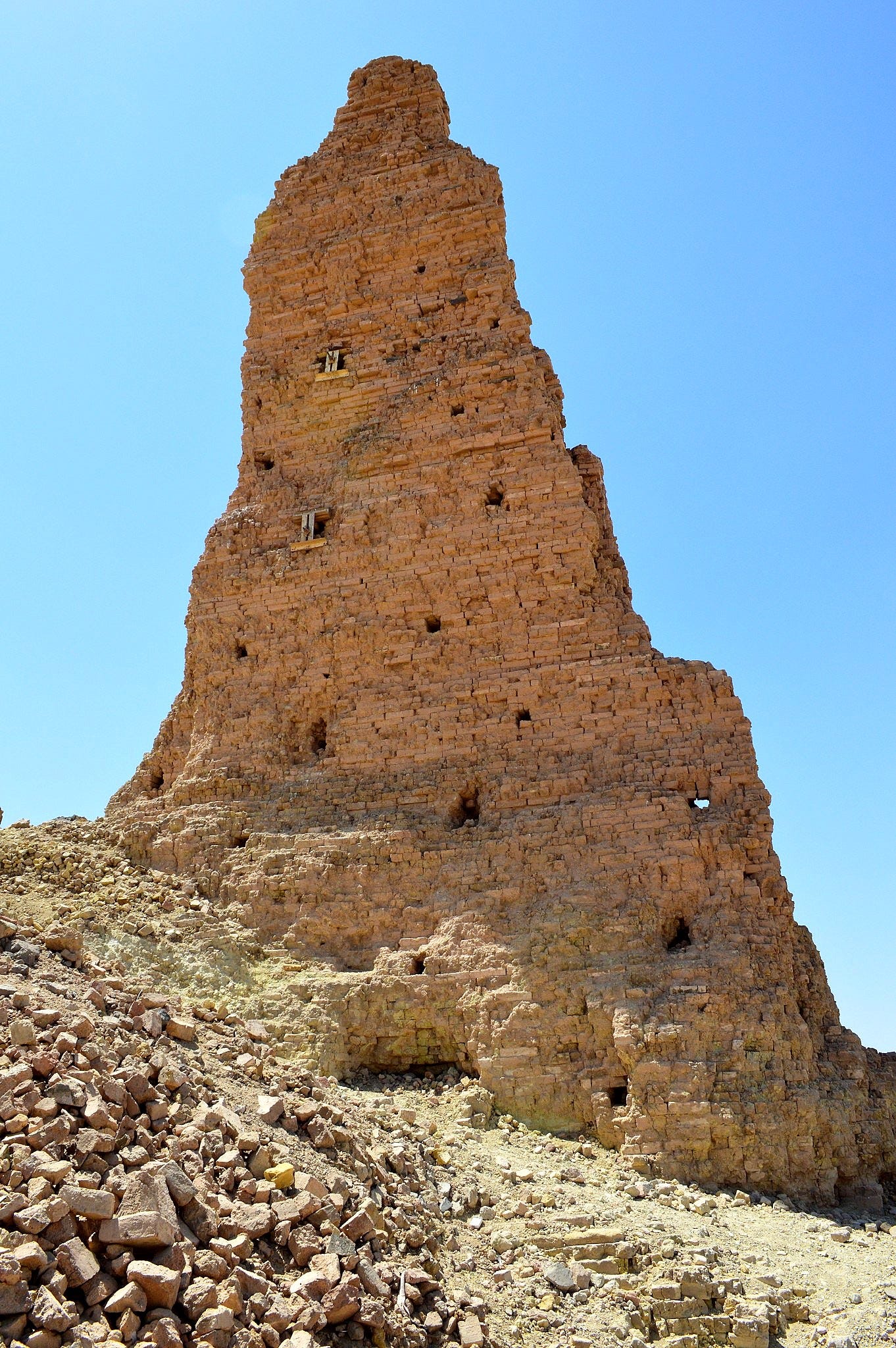Five Word Pairs That Underwent Semantic Shift In Late First Century CE According to the Talmud: Trumpet/Shofar, Willow, Table, Animal Stomach, and Babylon/Borsippa (Shabbat 36a)
Appendix - Willow: Arava vs. Tzaftzafa (Sukkah 34a)
Shanah Tovah and Chag Sameach!1
The Talmudic passage discusses several examples of semantic shifts that (purportedly) occurred after the destruction of the Second Temple in 70 CE.2 The passage is framed as a discussion by Rav Ḥisda, Abaye, and Rav Ashi, who identify words whose meanings inverted or changed.
Each example in the passage highlights a case of lexical replacement, metonymic drift, or semantic reversal. These changes reflect broader linguistic evolution patterns.
Five semantic shifts that occurred around the time of 70 CE:3
Trumpet/shofar: "Trumpet" (חצוצרתא) and "shofar" (שופרא) switched meanings.
Willow: "arava (ערבה)" and "tzaftzafa" (צפצפה) were reversed.
Table: "Petora"4 and "Petorata" (פתורתא) switched names.
City of Babylon: The names Babylon (בבל) and Borsippa (בורסיף) switched.6
Outline
Intro
The Passage - Five Word Pairs That Underwent Semantic Shift In Late First Century CE According to the Talmud: Trumpet/Shofar, Willow, Table, Animal Stomach, and Babylon/Borsippa (Shabbat 36a)
Appendix 1 - Analysis of the Talmud’s Statement of Five Word Pairs That Underwent Semantic Shift Around 70 CE: Trumpet/Shofar, Willow, Table, Animal Stomach, and Babylon/Borsippa (Shabbat 36a)
Trumpet (חצוצרתא) and Shofar (שופרא)
Willow: Arava (ערבה) and Tzaftzafa (צפצפה)
Tables: Petora (פתורה) and Petorata (פתורתא)
Animal Stomachs: Huvlila (הובלילא) and Bei Kasei (בי כסי)
Cities: Babylon (בבל) and Borsippa (בורסיף)
Appendix 2 - Willow: Arava vs. Tzaftzafa (Sukkah 34a) 5
Willows that grow by the river, excluding the tzaftzafa, which grows in mountainous regions (Ezekiel 17:5)
God intended for Israel to be like a willow by great waters, but they made themselves like a tzaftzafa of the mountains
Botanical Characteristics of willow vs. tzaftzafa
The Passage
אמר רב חסדא:
הני תלת מילי אישתני שמייהו מכי חרב בית המקדש:
״חצוצרתא״ —
״שופרא״,
״שופרא״ —
״חצוצרתא״ [...]
״ערבה״ —
״צפצפה״,
״צפצפה״ —
״ערבה״ [...]
״פתורה״ —
״פתורתא״,
״פתורתא״ —
״פתורה״ [...]
אמר אביי:
אף אנו נאמר:
״הובלילא״ —
״בי כסי״,
״בי כסי״ —
״הובלילא״ [...]
אמר רב אשי:
אף אנו נאמר:
״בבל״ —
״בורסיף״,
״בורסיף״ —
״בבל״.
Rav Ḥisda said:
These three objects, their names changed since the Temple was destroyed:
That which was called trumpet
was called shofar in later generations,
and that which was called shofar
was called trumpet in later generations [...]
The second object whose name was changed:
That which was called willow [arava]
was called in later generations tzaftzafa,
and that which was called tzaftzafa
was called willow [...]
The third item whose name was changed:
That which was called petora, originally meaning a large table,
was called in later generations petorata,
and that which was called petorata, originally meaning a small table,
was called petora in later generations [...]
Abaye said:
We too shall speak and comment on changes in the meaning of terms in our generation:
What was called huvlila, the first stomach of animals that chew their cud,
is, in recent generations, called bei kasei, the name of the animal’s second stomach.
Similarly, what was once called in the past bei kasei
is called huvlila in recent generations [...]
Rav Ashi said:
We too shall speak of matters whose name changed over the generations:
The city that, in biblical times, was called Babylon
was called Bursif in later generations,
and Bursif
was called Babylon in later generations
Appendix 1 - Analysis of the Talmud’s Statement of Five Word Pairs That Underwent Semantic Shift Around 70 CE: Trumpet/Shofar, Willow, Table, Animal Stomach, and Babylon/Borsippa (Shabbat 36a)
Thematic and Structural Observations:
The passage reflects a tiered structure:
Rav Ḥisda establishes three primary shifts.
Abaye and Rav Ashi extend the discussion with additional examples.
This is typical of the Talmud’s dialectic method, where later scholars expand on an earlier statement to generalize or refine it.
The phrase “we too shall speak” (אף אנו נאמר) suggests that semantic drift is an ongoing process, which later scholars should continue to track.
Notably, the Talmud does not reject these changes as “wrong” but rather documents them as linguistic facts. This passage serves as an early recognition of historical linguistics within the Talmud.
Trumpet (חצוצרתא) and Shofar (שופרא):
The shofar is an ancient ram’s horn used in biblical ritual.7
The חצוצרה is a metal trumpet, distinct from the shofar.
Willow: Arava (ערבה) and Tzaftzafa (צפצפה):
These are both types of willow-like plants used in Temple rituals, especially in the lulav bundle for Sukkot.8
Tables: Petora (פתורה) and Petorata (פתורתא):
The suffix -תא (-ta) often indicates diminutives in Aramaic-influenced Hebrew, so petorata was likely originally the diminutive form.
Semantic drift could have occurred as the diminutive form became dominant, replacing the base form.
Animal Stomachs: Huvlila (הובלילא) and Bei Kasei (בי כסי):
This change likely reflects regional or professional jargon shifts.
Butchers or scholars of kashrut (ritual slaughter laws) may have reversed their terminology, similar to modern shifts in professional terminology.
Cities: Babylon (בבל) and Borsippa (בורסיף):
Borsippa (modern-day Birs Nimrud) was a significant satellite city of Babylon.
The interchange reflects a population Shift: Borsippa became more important than Babylon.
Appendix 2 - Willow: Arava vs. Tzaftzafa (Sukkah 34a)
Willows that grow by the river, excluding the tzaftzafa, which grows in mountainous regions (Ezekiel 17:5)
A baraita states that "willows of the brook" (ערבי נחל) refer specifically to willows that grow by the river, excluding the tzaftzafa, which grows in mountainous regions.
R' Zeira supports this by citing Ezekiel 17:5, which metaphorically describes the Jewish people as originally planted like a willow by great waters but later becoming like a tzaftzafa. (This suggests that a tzaftzafa does not grow near water and is thus disqualified.)
תנו רבנן:
״ערבי נחל״ — הגדילות על הנחל,
פרט לצפצפה, הגדילה בין ההרים.
אמר רבי זירא:
מאי קראה?
״קח על מים רבים,
צפצפה שמו״.
[...]
The Sages taught an additional baraita:
“Willows of the brook” is referring to those that grow by the river,
which comes to exclude a tzaftzafa, which grows among the mountains and not near a brook.
R' Zeira said:
What is the verse from which the fact that the tzaftzafa is unfit is derived?
It is derived from the reprimand that is written: “He placed it by great waters,
and set it as a tzaftzafa” (Ezekiel 17:5).
The Jewish people were planted like a willow on great waters, but ultimately became like a tzaftzafa. Apparently, a tzaftzafa does not grow on great waters.
[...]
God intended for Israel to be like a willow by great waters, but they made themselves like a tzaftzafa of the mountains
R' Abbahu offers a theological interpretation: God intended for Israel to be like a willow by great waters, but they made themselves like a tzaftzafa of the mountains.
אמר רבי אבהו:
אמר הקדוש ברוך הוא:
אני אמרתי שיהו ישראל לפני כ״קח על מים רבים״,
ומאי ניהו?
ערבה,
והן שמו עצמן כצפצפה שבהרים.
[...]
R' Abbahu said that
God said:
I said that the Jewish people should be before Me as a plant placed by great waters,
and what is that plant?
It is a willow.
And they set themselves as a tzaftzafa of the mountains.
[...]
Botanical Characteristics of willow vs. tzaftzafa
A baraita details how to distinguish between a willow and a tzaftzafa:
A willow has a red stem (קנה), elongated (משוך) leaves, and smooth (חלק) edges.9
In contrast, a tzaftzafa has a white stem, round leaves, and serrated edges “like a sickle” (מגל).
תנו רבנן:
אי זהו ערבה ואיזהו צפצפה?
ערבה --
קנה שלה --
אדום,
ועלה שלה --
משוך
ופיה --
חלק.
צפצפה --
קנה שלה --
לבן,
ועלה שלה --
עגול
ופיה --
דומה למגל.
Apropos the defining characteristics of the willow branch, in contrast to similar species that are unfit, the Sages taught:
What is a willow and what is a tzaftzafa?
With regard to a willow branch,
its stem --
is red,
and its leaf --
is elongated,
and the edge of its leaf --
is smooth.
With regard to a tzaftzafa,
its stem
is white,
its leaf
is round,
and the edge of its leaf
is serrated like a sickle.
Unrelated to the piece below, I just added a new index page to the ChavrutAI website: “"Talmud & Tech" Blog Posts by Talmud Location”.
As I describe there, this page contains an index of my blogposts related to analysis of specific Talmudic sugyot:
Blog posts analyzing Talmudic passages, organized by tractate and page location.
Click on titles to go to the full articles at the "Talmud & Tech" Blog, or use location links to jump to the corresponding text in ChavrutAI.
It has a search feature, and dropdown to choose by tractate.
Screenshot, in tablet mode:
Compare my index here. The latter doesn’t link to Talmud locations, but it does link to all relevant blog posts—including every part of a series—which the other index does not.
אישתני שמייהו מכי חרב בית המקדש - “their names changed since the [Second] Temple was destroyed (in 70 CE)”.
Compare also my general discussion of semantic shift in the context of the evolution of meaning of the Hebrew term “am ha’aretz”, in a note on the intro to “Pt1 Rabbinic Elitism and the Am Ha’aretz: Hierarchy, Hostility, Hatred, and Distrust (Pesachim 49b)“.
It’s not completely clear whether this means that, for each of these five word pairs, their meanings were reversed, or that the terms became interchangeable. Ed. Steinsaltz consistently interprets the former, and this does seem to be the straightforward reading.
In general, see Appendix 1 my full analysis.
פתורה - see Wiktionary that etymologically, this word is ultimately from Sumerian, a non-Semitic language.
בי כסי - literally: “house/place of the cups”.
See Wikipedia, “Borsippa“:
Borsippa (Sumerian: BAD.SI.(A).AB.BAKI or Birs Nimrud, having been identified with Nimrod) is an archeological site in Babylon Governorate, Iraq, built on both sides of a lake about 17.7 km (11.0 mi) southwest of Babylon on the east bank of the Euphrates […]
It is today one of the most vividly identifiable surviving ziggurats, identified in the later Arabic culture with the Tower of Babel […]
Borsippa is mentioned in the Babylonian Talmud (Shabbat 36a, Avodah Zarah 11b) and other rabbinic literature.
Borsippa was dependent upon Babylon and was never the seat of a regional power.
The ruins of the so-called Tongue Tower of the ziggurat and temple of the god Nabu at Borsippa, Babel Governorate, Iraq (from Wikimedia Commons):
Compare also my extensive discussion of shofar vs. keren in a note here, on section “Bar Kappara’s maxims: proactive eating, drinking, defecating, and selling“.
Compare the extended Talmudic discussion in Sukkah.34a.3-6 (see my Appendix 2 of this piece) which distinguishes between them, but the distinction may have faded over time.
פיה - literally: “its mouth”.



